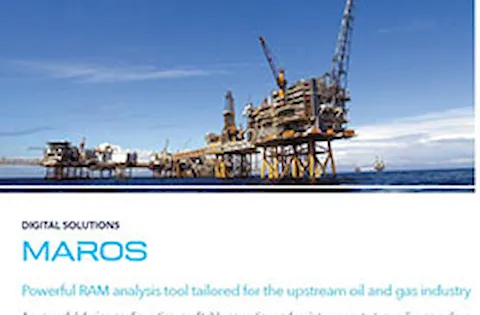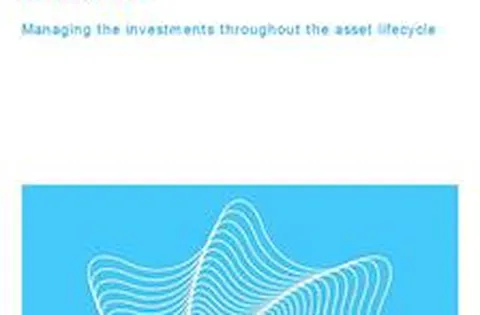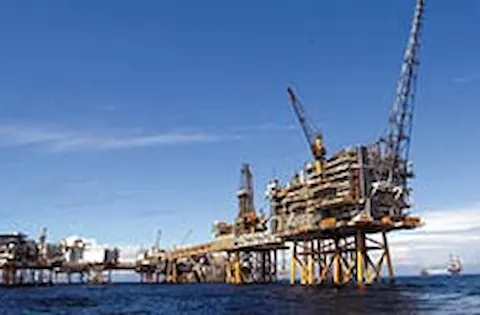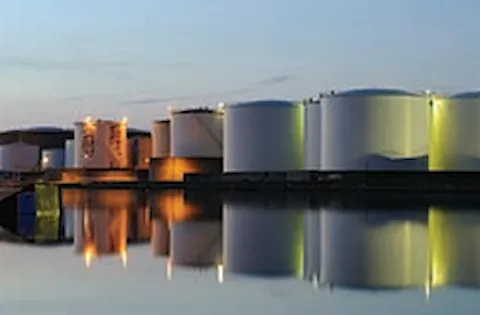Sustaining operational excellence
RAM analysis during operational stage. In a period with oil prices under pressure, understanding the risks and potential impact of failures during the operational stage is essential.
If oil and gas producers in the UK Continental Shelf could reduce capital and operational cost by only 1% the savings would be approximately £2 billion (Capex) and £1.5 billion (Opex).
Focus on Capex and Opex?
Taking a conservative approach where operational expenditure grows at the rate of 1-5% over (the average increase over the past 40 years is around 20%) the next five years, the estimated cost to operate in the North Sea will be between £10.5 and £11 billion.
When discussing financial analysis in the oil and gas industry, focus tends to be on the overall investment of a process plant – the capital expenditure. Why is that? Capex represents a significant contribution to the investment in an oil and gas asset, typically made during the first few years. However, the operational expenditure, could potentially be larger than Capex. When calculating the running cost of a process plant, we should consider maintenance costs and utilities (power, water and gas) supply and so on. Considering that these expenses will be present over the entire venture’s life (around 20 to 30 years), Opex can easily overcome Capex.
Capex is also easier to estimate – the investment on purchasing equipment items and constructing the facilities. Opex, on the other hand, is variable. Failures are random and require a number of spare parts as well as specialized manpower.
How do we optimize Opex?
There are two techniques used to estimate the OpEx: dynamic simulation or the traditional static calculation techniques.
Static calculations use constant consumption rates of maintenance resources (spares) and utilities to determine operating costs for an assets - it presents a simple solution which can be used as a starting point.
Dynamic simulation takes account of continuous changes in the state of the system over its expected life. This includes equipment reliability, logical events, operating and maintenance strategies, availability of services and personnel and status of buffer storages. Clearly, any attempt to calculate the expenses with this degree of complexity by static calculation is virtually impossible.
Incorporation of all these factors in the analysis results in more realistic financial figures and improves confidence in the predicted values and recommendations. This is one of the major benefits of Reliability, Availability and Maintainability (RAM) analysis aligned with simulation techniques over traditional methods - the ability to incorporate your understanding of the asset and the way it operates within your organization.
This is the methodology implemented by Maros and Taro software
Another noticeable advantage of using Maros for ram analysis and Taro for refinery design, is that the analyst gets a true 'feel' for the system being simulated, and learns quickly about its pros and cons. These may relate to the design itself or associated operations. Such insight helps improve the system.
Other aspects that are important to account for when calculating the Opex are:
- Annual discount rate, relating the worth in financial terms of a future sum to its present value
- Maintenance operating expenditure, e.g. consisting of cost in day rates as well as any mobilization/de-mobilization costs
- Product price, representing the revenue
Armed with all these parameters, the analyst could calculate the net present value (NPV). Net present value allows comparisons between different projects by using all the cash flows from the project and adjusting them to their present values by applying the appropriate discount factor. The projects then become directly comparable. Should the present value of the capital inflows exceed those of the outflows after the selected discount rate, the project is showing a positive cash flow return. However, if the NPV is negative, the returns from the project are less than the outflows and attempts should be made to minimize the NPV.
Sometimes it is difficult to get investment figures but once that barrier is overcome, the analysis becomes richer and it becomes easier to explain the output.
Why RAM analysis during operational stage?
Many of the departments implementing Maros and Taro are defined as Operational Excellence departments, evidence that Maros and Taro are no longer just RAM analysis tools, they are truly asset management simulation tools.
Maros and Taro bring different sets of information together and give the analyst an overall view of many factors. The use of RAM analysis during the operational stage consists of business plan definition, scenario identification, maintenance strategy and evergreen models.
Business plan definition
Maros and Taro have been implemented during the operational stage to assess business plans. Since the methodology gives you the tools to understand and predict the performance of your asset, the uncertainty around productivity is mitigated. Contracts and budgeting are then defined taking into account the risks of unavailability or even market constraints.
Scenario identification
In addition to the assessment of business plans, Maros and Taro enable analysts to work on a case-by-case basis. For example, for a failure in a compression station, which is part of a transmission line, some questions could be:
- What is the impact?
- Will the linepacking operation be enough to sustain production?
- What resources are used?
- What is the likelihood of the resource being available at the time of the failure?
This produces an asset operations plan enabling analysts to extend their current understanding of the asset (for new plants, this is quite powerful given the uncertainty level).
Maintenance strategy
Inspection plans, planned and opportunistic maintenance, all of these could be potentially measured during the operational stage. This ensures that, for instance, the quantity of maintenance resources required is defined. Potential integration with Risk-Based Inspection (RBI), where intrusive and non-intrusive maintenance activities are optimized, can be incorporated. Running a simulation tool like Maros and Taro will enable analysts to track the frequency of failures, the maintenance resources used and cost associated to them.
Evergreen models
This approach combines existing data from your asset with data from industry standards to benchmark your performance. For example, analysts populate an existing model (typically from the design stage) with data from their maintenance system. The same model could be then modified to incorporate data from other sources (e.g. perhaps Oreda, or taking the best performing equipment item within the system as a benchmark for all the others). With these two models, you could start comparing the criticality contributors and the efficiency. This will help you to create an asset management plan. Simply, this pinpoints where to focus (or not focus).
After a certain period of time, you could re-iterate the same model with new data from your maintenance system and measure the success achieved – the data will speak for itself. For example, a compressor failed two times for the first year and you decided to reduce the inspection time from every six months to every four months; the next year it only failed once or you were able to identify the failure quicker, reducing overall downtime. This is reliability tracking. In addition to keeping track of your reliability trends, you could keep track of your bad actors.
4/12/2016 3:44:19 PM




